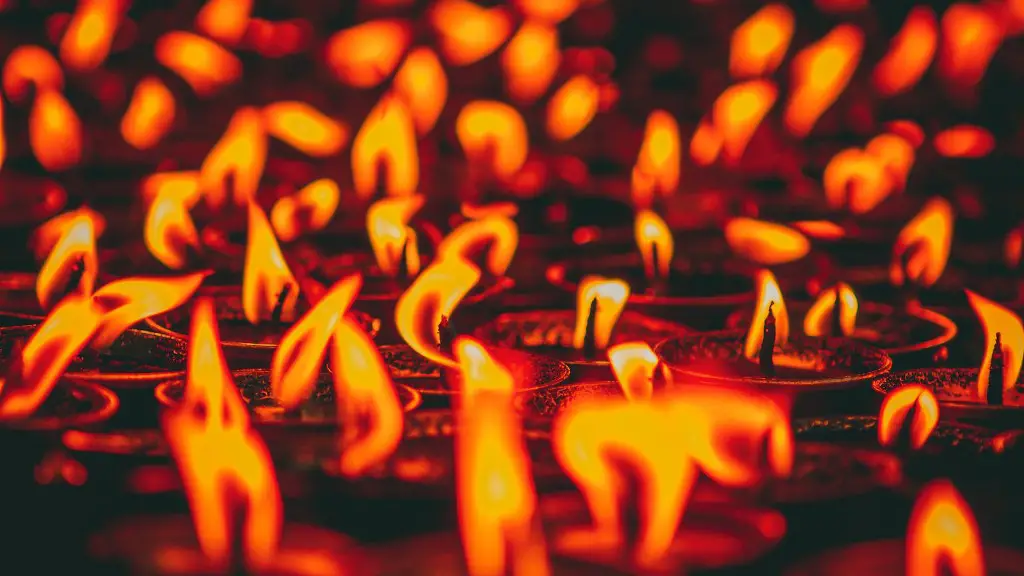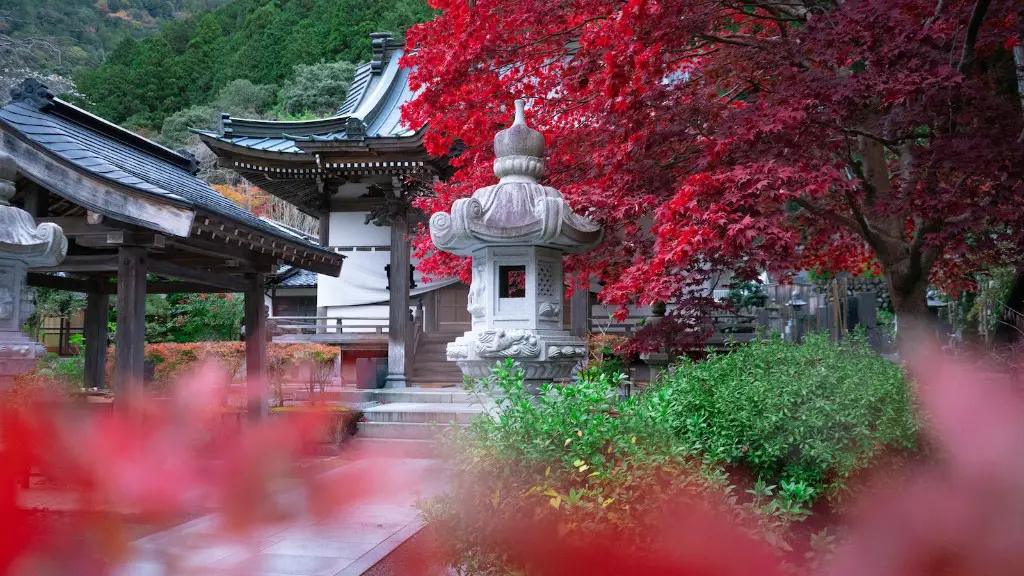Nature of Deities in Hinduism
The concept of deities in Hinduism, or Dharma, is a fundamental aspect of the religion and originates from ancient Vedic scriptures. This religious framework is often referred to as Sanatana Dharma, also known as eternal truth. There are millions of Hindu gods and goddesses in Hinduism, which can sometimes seem overwhelming even to one who follows Hinduism. Unlike other religions, which have one or a few major figures, such as Jesus, God, or Mohammad, Hinduism has countless different gods, goddesses, and figures.
The exact number of different gods and goddesses in Hinduism is generally agreed upon to be 330 million, but some scholars claim it is closer to a billion. According to Hindu scripture, each deity represents a different aspect of the Supreme Being that is ultimately responsible for the universe. This is in contrast to monotheism, which holds that there is only one divine being, or polytheism, which holds that there are many gods in addition to the one supreme being.
Hindu deities come in many forms and can be divided into three major categories: personal gods, cosmic gods, and manifestation gods. Personal gods, also called ishta devatas, are gods that a devotee personally chooses to worship. These may include deities like Shiva, Vishnu, Krishna, or Rama. Cosmic gods, on the other hand, are deities found in Hindu scripture which are not re-incarnations of personal gods. These include entities like Brahma, Saraswati, and Agni. The third category of gods includes manifestation gods, which take on different forms and can represent different spiritual goals or energy. Examples of manifestation gods would be Hanuman, Kali, and Durga.
In addition to the different forms of gods, there are also many different aspects of the Supreme Being which can be worshipped. These aspects, called avatars, typically take the form of animals or humans. One of the most famous avatars of Vishnu, the god of preservation, is Krishna. Vishnu is also said to have ten other avatars, including the tortoise and the fish.
Throughout India, there are temples dedicated to different gods and goddesses which are visited by millions of pilgrims each year. Hinduism is a complex religion and its deities have evolved over time in many different ways. Despite this, the basic understanding of gods and goddesses in Hinduism remains relatively consistent.
Symbolism of Hindu Deities
The deities in Hinduism have varying degrees of symbolism and significance. For example, Shiva is said to represent rebirth and destruction, whereas Vishnu represents protection and preservation. Similarly, symbols such as the lotus flower are often used to represent aspects of divinity, such as beauty and purity. This symbolism is often used by Hindus in various ways, from worshipping different gods and goddesses, to meditating on their attributes, or simply to find meaning in their everyday lives.
Symbols associated with different gods and goddesses can also be found in Hindu art and architecture. For example, sculptures, paintings, and carvings of Shiva, Vishnu, and other deities can be found throughout India. This type of artwork and decoration is often used to inspire devotees and remind them of the importance of faith and devotion to the gods and goddesses.
Symbolic elements are also often invoked during Hindu rituals and ceremonies. These can include offerings, chants, and gestures that are meant to invoke the power and protection of a particular deity. As a part of their spiritual practice, many Hindus may also meditate upon symbolic forms of deities. This allows devotees to focus their energy and seek a deeper understanding of the deities and the divine energy within them.
Avatars of Deities in Hinduism
Avatars are other forms that a particular deity can take on. Typically, an avatar will represent a particular power or attribute of the deity. For instance, the avatar of Vishnu, known as Krishna, is said to represent love and compassion. Similarly, Rama is an avatar of Vishnu which represents truth and strength. In Hinduism, it is believed that by worshipping the avatar of a deity, a devotee can connect with the god or goddess in a deeper way.
Avatars usually take the form of humans, animals, or combinations thereof. In addition to Vishnu, many other Hindu gods have avatars as well. The avatars of the goddess Parvati, for example, include Kamakshi and Lakshmi. Similarly, the avatars of Shiva include Nataraja, which is a dancing figure, and Hanuman, a monkey god. Finally, avatars can also represent non-divine entities, such as divine kings or warriors.
Significance of Deities in Hinduism
Devotion to gods and goddesses is a central part of Hinduism and can be found in all aspects of the religion. By worshipping and mediating upon various deities, Hindus can connect with their higher selves and gain access to their spiritual power. This form of devotion is also a central component of Hindu ritual and ceremony, as devotees seek to commune with the divine and express their gratitude and reverence. In addition, deities are seen as symbols of strength, divine will, and guidance. As such, they are respected and venerated by millions of Hindus throughout the world.
In addition to being symbols of power and guidance, deities in Hinduism also represent ethical values and principles. For example, the god Rama is seen as a perfect embodiment of righteousness and truth. Devi, the goddess of abundant strength, is seen as a symbol of female power and wisdom. This type of symbolism can be found throughout Hindu scripture, as devotees seek to embody the teachings of their chosen deity.
Conclusion of Deities in Hinduism
Hinduism is a complex religion, with millions of gods and goddesses, each representing a different aspect of the Divine Being. Hindus typically have one or more Vedic deities that they personally worship, as well as cosmic and manifestation gods. Symbols of these deities can often be found in Hindu art, architecture, and scriptures, and they are a central part of intellectual and spiritual practice. Hindus also see these deities as symbols of power, divine will, and guidance, and use them as inspiration to live a life of righteousness and virtue.
Role of Deities in Spiritual Practice
The deities of Hinduism can play a significant role in the spiritual practice of devotees. Worshipping, chanting, and meditating upon the gods and goddesses can bring devotees closer to their spiritual goals. Similarly, worshipping avatars of the chosen deity can provide devotees with a deeper insight into the true nature of the being. Finally, the ethical values that these deities represent can help devotees stay on the righteous path and maintain their spiritual growth.
Ritual and Ceremony of Deities
Hindu rituals and ceremonies often involve the veneration of gods and goddesses. Devotees may offer offerings, chant mantras associated with the deity, or engage in other practices that help to invoke the divine being. This can vary depending on the particular deity being worshipped, as some gods and goddesses have different demands or needs. During these rituals and ceremonies, adherents may also partake in practices such as group prayer to enhance their spiritual connection with the deity in question.
Symbolic Meaning of Deities in Hinduism
The deities of Hinduism are often seen as symbols of power, divine will, and guidance. For example, the god Vishnu is seen as the protector of the universe and the destroyer of obstacles, whereas Shiva is seen as a destroyer and a generator of new life. Similarly, the goddess Lakshmi is a symbol of abundance, prosperity, and wealth, and Saraswati is a symbol of knowledge and wisdom. Through these symbols, devotees can gain a deeper understanding of their faith and connect with the divine.


